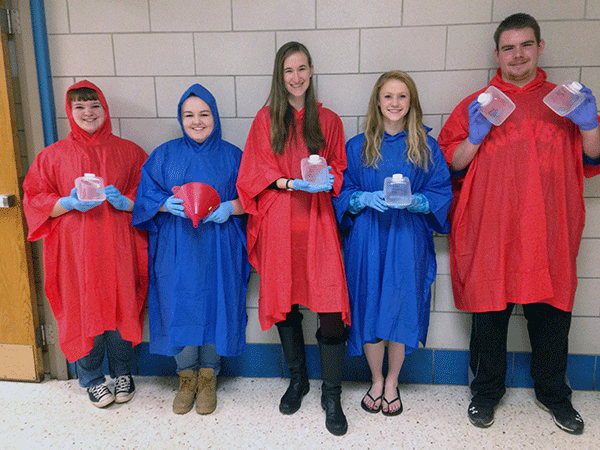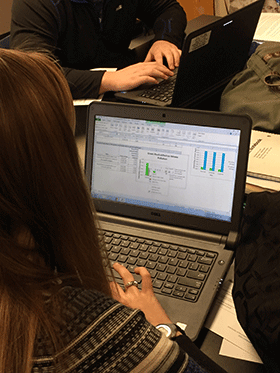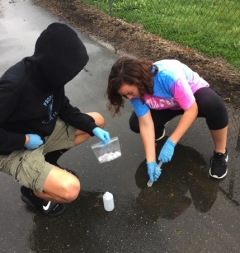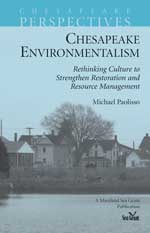Knauss legislative fellowships in Congress help build careers — and they're fun and educational. See our video and fact sheet for details.
What They Will Remember Ten Years From Now
Three years ago, I was beginning my final semester as an undergraduate and facing the daunting task of student-teaching high-school classes about earth and environmental science full time for 10 weeks. I often thought about what students should take away from my class. What do I want students to remember in ten years?
Should students remember fundamental concepts and theories like plate tectonics and global wind patterns? Or should students remember the scientific process that leads to theories like plate tectonics?
As a Ph.D. student three years removed from that teaching adventure, I firmly believe students should remember primarily the nature of science and the process of science that leads to new discoveries. As the famous astronomer Carl Sagan once said, “Science is more than a body of knowledge. It is a way of thinking.”
Now, as a Maryland Sea Grant research fellow, I have a unique opportunity to carry out this approach in my current research project, which involves studying nitrogen pollution in Maryland streams. The project includes collaborations by scientists in my laboratory with local high-school students and teachers. These partnerships allow the students to participate in real-world research and understand the nature of science firsthand.

Students from Northern Garrett High School in Accident, Maryland, display samples of rainwater and runoff collected from their schoolyard during a rainstorm. Photo credit: Cassie Doty
I began my Ph.D. at the University of Maryland Center for Environmental Science Appalachian Lab, in Frostburg, in fall 2016 and immediately began participating in this research and educational project. The students are working with my lab to address research questions, such as how much nitrate is in rainfall? What is the source of nitrate in runoff from schoolyards? Do different land types – forest, agricultural, and urban – affect the amount or source of nitrate in runoff? These research questions have immediate relevance to both local and downstream water quality; nitrate is a necessary plant nutrient but can become harmful when present in large amounts in aquatic systems. For example, in the Chesapeake Bay, high concentrations of nitrate have caused harmful algal blooms and low oxygen areas, or “dead zones”, which can kill aquatic life.
Our research project about nitrogen in streams is timely because recent advances in the analysis of stable oxygen isotopes in streamwater provide a new opportunity to trace atmospheric nitrate more accurately and help measure its contributions to surface waters more accurately.
To address the research questions, nearly 400 students and 15 teachers from 13 high schools in three western Maryland counties have been collecting samples of precipitation and runoff from two sites on their schoolyard with different land uses, including a parking lot and an athletic field. Runoff and precipitation samples are sent to scientists at the Appalachian Lab, and we analyze samples for nitrate concentrations and isotopes. Nitrate concentrations provide information on how much nitrate is present while nitrate isotopes allow us to understand the sources of nitrate in runoff.
 |
|
A participating high school student analyzes and graphs nitrate concentration data from precipitation and runoff. Photo credit: Cassie Doty |
Students then use this data to take another step in the research: they are responsible for analyzing the data to look for patterns (graphing) and using basic statistical techniques to understand whether patterns are meaningful.
Finally, scientists visit each participating school and listen to presentations given by students. This is the highlight of the student-teacher-scientist partnerships. The scientists ask the students questions regarding their conclusions. Presenting data and forming conclusions to address research questions forces students to critically examine the data and find evidence to support conclusions.
I believe the presentations are beneficial to both students and scientists. Students often have novel questions or conclusions – students have a different background and way in which they view things and thus can provide a new set of ideas. For example, nitrate concentrations in some precipitation samples tripled over the course of a single rain event. While discussing this surprising finding, a student at Mountain Ridge High School in Frostburg hypothesized that fluctuations in electricity generation at coal-fired power plants (a major source of atmospheric nitrate) could be responsible for the increasing nitrate concentrations observed.
The students gain an understanding of nitrate dynamics within their schoolyard, but years from now, I doubt they will remember that nitrate concentrations in precipitation increased throughout a thunderstorm. And they may not remember the relationship between land-use type and nitrate abundance. I do think many students will remember the steps taken during the research project that led to their conclusions – and, I hope, gain a better understanding of the nature of science.
Photo, top left: Students from Clear Spring High School in Clear Spring, Maryland, collect water samples from runoff in a parking lot at their school. Photo credit: Cassie Doty
Additional details about this research project, which is funded by Maryland Sea Grant, are available here.
See all posts to the Fellowship Experiences blog


